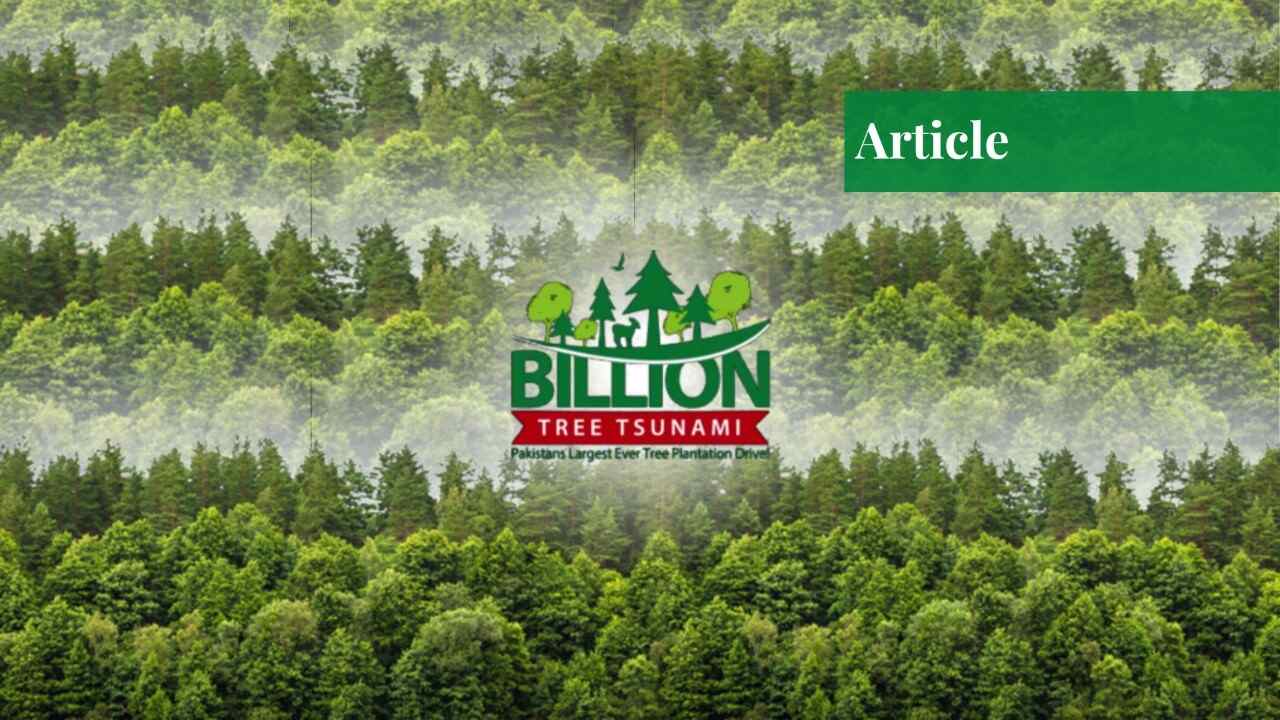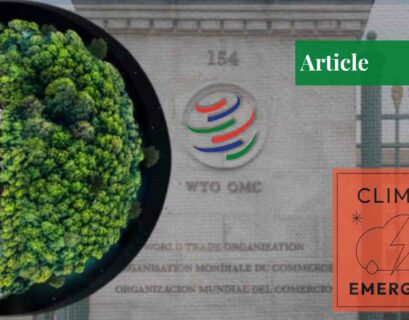Ms Seemal Nadeem is studying public policy at NUST.
Introduction
Pakistan has been ranked the 8th most vulnerable country to climate change according to the long-term Global Climate Risk Index (CRI) 2021 of the German Watch Report. According to UNDP, Pakistan is expected to face increased vulnerability to monsoons and extreme events like floods.
The melting rates of the Himalayan glaciers are increasing, accompanied by intense rainfalls and the record-breaking volumes of water have triggered flash floods and glacial lake outburst floods. This has not only affected the highlands, but the downstream effect has also adversely impacted agriculture in flat lowlands.
One of the major reasons for Pakistan’s increased vulnerability to climate change and its adverse impacts, like flooding and land degradation, has been attributed to the high rate of deforestation. The average forest cover of a country should be 25% as per international requirements, whereas Pakistan, one of the most populated countries has a forest cover of only 5%.
Green Emergency
World Bank has declared Pakistan to be in a state of “Green Emergency” as “every year, Pakistan loses almost 27,000 hectares of natural forest area”. Forest-based industries and most of the rural population that depends on the country’s forests for livelihoods face a threat to their source of income. The change in the ecosystem also threatens tourism and agriculture.
To address the above-mentioned crisis, the Kyoto Protocol of 2005 made carbon-sequestration activities in land use an obligation on the signatories of the protocol. This included afforestation which is defined as the “conversion of non-forested land to the forest” (Selin and Hosansky). In 2014, the PTI government in KPK launched the Billion Tree Afforestation Program (BTAP) in line with the international obligation to the Protocol and the Bonn Challenge – “a global goal to restore degraded and deforested landscapes by 2020” (International Union for Conservation of Nature).
Then in 2018, when the PTI government became the ruling party, they launched the Ten Billion Tree Tsunami Program (TBTTP) across Pakistan to slow down the impact of climate change, absorb CO2 emissions, “revive forest and wildlife resources in Pakistan, to improve the overall conservation of the existing protected areas; encourage eco-tourism, community engagement and job creation through the conservation”.
Through the TBTTP, the government intended to increase protected areas to 15% by 2023 (which was 12% in 2018 and increased to 13% in 2021), to create 7000 long-term jobs and 85,000 daily wagers. It is estimated by WWF that “670, 000 trees planted on 600 hectares will sequester 15, 195.36 tons of atmospheric carbon dioxide”.
By 2017, the BTAP surpassed its Bonn Challenge target and restored 350,000 hectares of degraded forest land, and made 13,000 private tree nurseries that generated employment opportunities for the youth and women in KPK; the political leadership claims that this was made possible by involving the local communities.
Moreover, since the TBTTP, Pakistan’s tree cover loss by year has been decreasing from 190 hectares in 2017 to 69 hectares in 2020 which shows a significant decrease in deforestation. 505 million saplings have been planted as of January 31, 2022.
Urban densely populated areas such as Karachi and Lahore tend to heat up faster because of the rate at which concrete, steel, and glass absorb sunlight. The afforestation initiative has helped in growing tree canopies along roadsides to provide shade, absorb CO2 from traffic, and improve air circulation.
Afforestation Alone Solves Nothing
Afforestation is considered by some as an effective climate change mitigation policy as the trees absorb CO2 acting as a sink to reduce the greenhouse effect. However, critics say that afforestation is a waste of resources, as Pakistan is already facing a water shortage in many areas.
There is no denying that the afforestation initiatives have been following the budgetary estimates; there is huge international and national support for the programs as they promote climate change activism, and create awareness and job opportunities for many. These initiatives have also given livelihood opportunities to women, and they have reduced deforestation by restoring thousands of hectares of land.
However, in the bigger scope of global climate change, these initiatives may not be an environmental success, especially for Pakistan. Pakistan ranked 5th on CRI 2020 but dropped 3 places to the 8th rank in 2021. The demotion was seen as a huge achievement by the PTI government; a PTI member of the standing committee of the National Assembly on climate change, Rai Muhammad Murtaza Iqbal, told Geo that the improvement is credited to PTI’s tree afforestation programs that are ‘slowly reversing global warming’.
However, this was misinterpreted by the political leadership as a success. The CRI ranks the level of vulnerability of countries to extreme weather events; it focuses on the frequency of extreme events (floods, heat waves, and storms). It does not consider slow-onset processes like melting glaciers and rising sea levels. This means that Pakistan is not ‘slowly reversing global warming’, and the improvement in ranking does not mean that Pakistan has become less vulnerable to climate change or that the frequency of extreme events has reduced.
In addition, Pakistan has seen worsening climate conditions in recent months. In 2022 alone, we have seen the hottest April in 61 years with the highest temperature reaching 51 degrees Celsius in Jacobabad. The mountain glaciers have melted faster than normal which has caused flash floods and the trees planted by the afforestation have not been enough to protect the land from such high volumes of water.
Conclusion
The TBTTAP is expected to cost Pakistan Rs. 125 billion, but Pakistan cannot reap its environmental benefits without transnational cooperation. Pakistan already contributes less than 1% to global carbon emissions, so even if it reaches net-zero emissions, it will not have an impact on reducing the greenhouse effect.
In my opinion, adopting any climate change mitigation policies by Pakistan, including afforestation initiatives, will be a waste of valuable resources since its efforts to prevent climate change will be negligible. Afforestation should be continued by Pakistan but with a greater focus on adaptation policies that can be more cost-effective.
If you want to submit your articles and/or research papers, please check the Submissions page.
The views and opinions expressed in this article/paper are the author’s own and do not necessarily reflect the editorial position of Paradigm Shift.



















